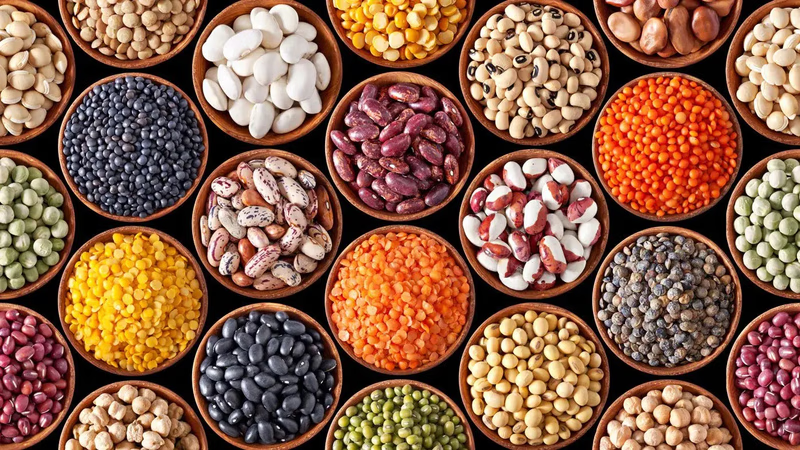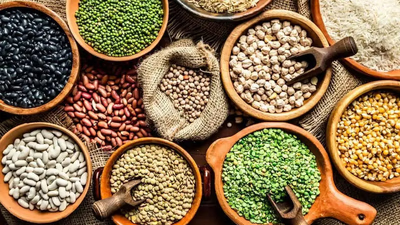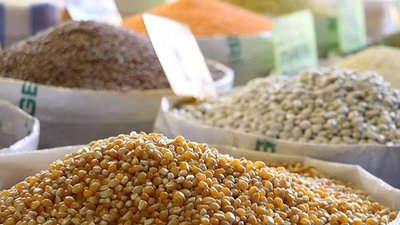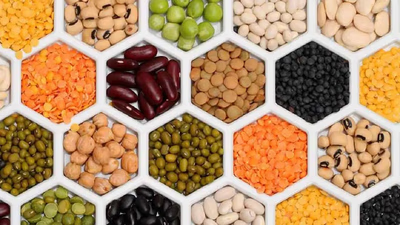
Grains and legumes: vital commodities for Middle East trade.
In terms of production, Turkey stands out as a significant producer of wheat, chickpeas, and lentils, benefiting from its diverse climate and arable land. Iran and Iraq are notable for rice cultivation, with Iran producing varieties like Basmati. Egypt, although in North Africa, plays a crucial role in fava bean production and exports to the Middle East. However, production can be hindered by challenges such as water scarcity, soil salinity, and political instability. Ongoing conflicts, as seen in Syria, have disrupted wheat production, highlighting the vulnerability of agricultural systems.
When it comes to consumption, bread takes center stage in the Middle Eastern diet. Various types of wheat-based bread, such as pita, lavash, and flatbreads, are consumed daily, holding cultural and symbolic importance. Rice, while less prevalent than bread, is a key component of many meals, particularly in Persian, Iraqi, and Gulf cuisines. Chickpeas, lentils, and fava beans are consumed in multiple forms, playing essential roles in everyday meals and festive dishes. Chickpeas, in particular, are a rich source of protein and are widely used in vegetarian and vegan diets.
Despite challenges related to production and consumption, these staples continue to be culturally significant and provide essential nutrients to the population. Sustainable agricultural practices, water management strategies, and efforts to enhance food security are crucial for the region's future. Additionally, promoting local production, diversifying crops, and reducing import dependence can contribute to a more resilient and self-sufficient food system in West Asia. Some West Asian countries that are active in the production and trade of grains and legumes . The status of production and consumption of grains and legumes in West Asian countries may be different depending on the different conditions that exist in each country.
- Iran is one of the largest producers of grains and legumes in the region. The main cereals include wheat, barley, rice and corn. Iran also imports grains such as wheat and rice.
- Iraq is also an important producer and importer of grains and legumes. Wheat, barley, rice and lentils are among the products that are produced and exported in Iraq .
- Türkiye is one of the largest grain producers in the region. Wheat, barley, corn and rice are among the products produced in this country.
- Saudi Arabia also relies on imports of grains and legumes and depends on other countries to meet its needs.
- The United Arab Emirates is also mainly dependent on the import of grains and legumes and almost all of its needs are met from other countries.
Iran is one of the largest producers of grains and legumes in the region. Wheat, barley, rice and lentils are among the products produced in Iran. These products are consumed as the main food in the Iranian diet. Iraq is also a country that produces grains and legumes. Wheat, barley, rice and lentils are among the products produced in Iraq. These products are also used as the main food in the Iraqi diet.
Türkiye is also one of the important grain producers in West Asia. Wheat, barley, corn and rice are among the products produced in Turkey . These products are used in the preparation of various foods and breads in Türkiye. Due to unfavorable weather conditions for agriculture, Saudi Arabia is mostly dependent on the import of grains and legumes. Wheat, barley, rice and lentils are among the products that are imported and used in the diet of Saudis. In the agricultural sector, the United Arab Emirates depends on the import of grains and legumes due to limited water resources and unfavorable weather conditions. But as an industrial and commercial country, the United Arab Emirates is one of the largest importers of grains and legumes in the region.
Several trends and issues impact the production and consumption of grains and legumes in West Asian countries. Water scarcity poses a significant challenge to agricultural production, necessitating the adoption of efficient irrigation methods and drought-resistant crops. Import dependence is prevalent, especially in countries with limited arable land, such as the Gulf States. Political instability and conflicts can disrupt food production and distribution, affecting food security in countries like Syria and Yemen. Additionally, economic factors, including growth and urbanization, contribute to changing dietary patterns, with an increased demand for processed foods and a more diverse diet.



